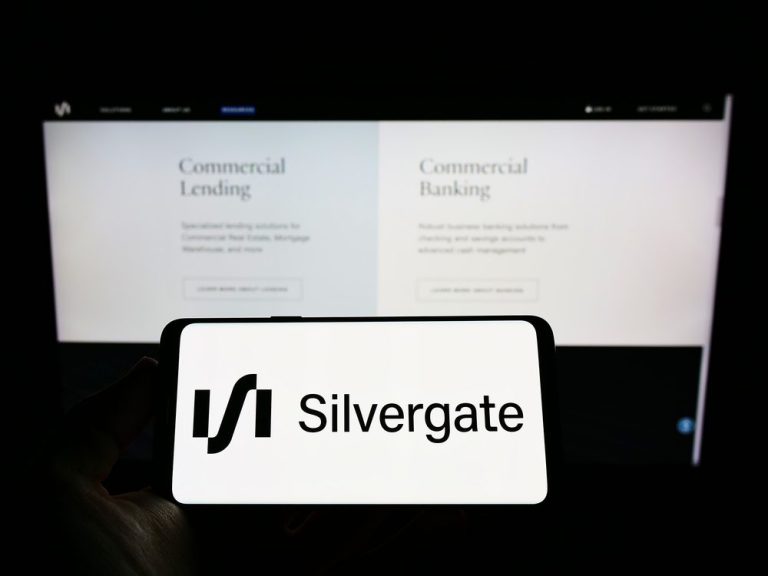Silvergate’s Crisis Gives Regulators Ammunition to Keep Crypto from Mainstream Banking

Silvergate’s existential crisis may give regulators the ammunition they need to keep crypto and mainstream banking separate.
As reported here, Silvergate Capital said in a U.S. Securities and Exchange Commission filing this week that a slew of issues could impact its “going concern” viability. In SEC-document-speak, we note that essentially means there’s the risk of shutdown and unwinding of operations.
As to the ripple effects of what might happen should Silvergate cease to be a going concern — well, that’s unclear at the moment. But Thursday’s action in the stock market — where the shares are down 47% — shows a crisis of confidence.
The SEC filing noted that there are “regulatory and other inquiries and investigations that are pending with respect to the company.” The company’s accountant is also looking for some details on finances. The investigations and scrutiny are tightening from the likes of the U.S. Department of Justice and Congress.
One of the issues — among the many issues — is the intertwining of mainstream banking and crypto-related banking. As noted by several senators in a letter earlier this year, there are concerns about using the Federal Home Loan Bank (FHLB) program to boost its balance sheet.
“By using the FHLB as its functional ‘lender of last resort,’ Silvergate has further introduced crypto market risk into the traditional banking system,” the senators wrote. “If Silvergate were to fail — as have banks facing a fraction of the withdrawal rates Silvergate has faced — it could leave the FDIC — and therefore the American taxpayer — holding the bag.” Silvergate detailed in January that it held $4.3 billion in “short term” Federal Home Loan Bank of San Francisco advances. At the end of the year, the company detailed, it also held $2.4 billion in brokered certificates of deposit. And in response to what is akin to a banking run — the crypto firms holding deposits at Silvergate were facing their own liquidity crunches amid crypto routs in recent months — Silvergate had been selling securities and derivatives to shore up liquidity.
Silvergate’s model straddles crypto and the traditional financial system: The company is a registered bank holding company that is subject to supervision by the Fed, and deposits are insured up to legal limits by the FDIC.
And Silvergate provides financial services — commercial banking, mortgage lending and asset-based lending — to digital-currency clients.
Where Traditional Finance and Crypto Intersect
At issue, of course, is that traditional financial products, as noted above, are being tied to crypto risks as those clients navigate the turmoil of crypto markets and the continued fallout of the FTX implosion.
In the January joint statement from the Federal Reserve, Office of the Comptroller of the Currency and Federal Deposit Insurance Corp. — the regulators warned of the risks of “significant volatility in crypto-asset markets, the effects of which include potential impacts on deposit flows associated with crypto-asset companies” and “contagion risk within the crypto-asset sector resulting from interconnections among certain crypto-asset participants, including through opaque lending, investing, funding, service, and operational arrangements. These interconnections may also present concentration risks for banking organizations with exposures to the crypto-asset sector.”
Scarcely two months after that statement was penned, Silvergate seems to offer proof positive of those fears being realized. The spillover effect may be relatively tame — a small nightmare — at least in terms of the overall financial system at large.
But for the regulators, the tipping point may be there to reshape the intersection of the crypto/traditional financial sector. As PYMNTS has found, only about 10% of FIs offered enterprises access to cryptos — but three-quarters of financial institutions (FIs) had at least some plans to do so.
The lines were set to blur between banking and crypto banking; now they’ll be more sharply defined.
And recent research from the Bank of International Settlements bears out the minimal appetite banks have for dipping their toes in crypto waters: Last year, banks cut their exposure to cryptos by nearly half — and exposures are an infinitesimal (a fraction of a percent) of assets. The banks have been reluctant to hold digital currencies; now, they’ll be more reluctant to service the firms holding them.
Central bank digital currency (CBDCs) and tokenized deposits may be the winners here — championed by the regulators — as they represent digital versions of deposits and dollars that don’t get marked down in the event of crypto bank runs or crypto price volatility.
In January, the Fed and other regulators wrote that they “have significant safety and soundness concerns with business models that are concentrated in crypto-asset-related activities or have concentrated exposures to the crypto-asset sector.” Silvergate will only deepen those concerns.